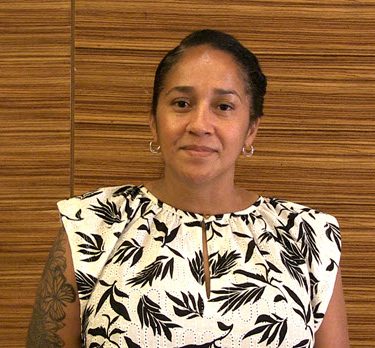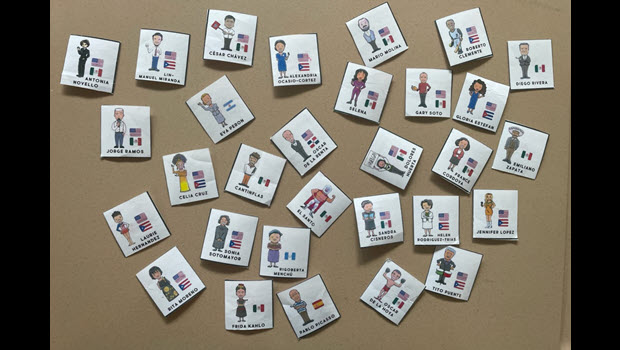In schools across the state, students are learning about Hispanic and Latino culture and history in honor of National Hispanic Heritage Month, September 15 – October 15.
Eighth-graders in Newington world language teacher Elsa Batista’s class have been researching Hispanic and Latino leaders, scientists, artists, entertainers, and others to learn about each individual’s contributions as well as the countries from which they or their ancestors came.
“Each student had to choose a famous individual and research that person,” Batista says. At Martin Kellogg Middle School, students begin learning word languages in eighth grade, so Batista’s students are mostly novices just beginning to learn the Spanish language and the geography, traditions, and cultures of places where Spanish is spoken.

Newington world language teacher Elsa Batista moved from the Dominican Republic to the Bronx as a young child.
“So much about world language learning is interdisciplinary,” Batista explains. “Students learn about grammar and social studies, and through this project they’re learning about leaders in a variety of different fields.”
Because most of her students only began learning Spanish in September, for this project Batista had them conduct research in English, and each day one student shares about the individual they studied.
“For some of my heritage speakers, they especially connect to the individual they choose to study—’That’s someone from my culture, someone who speaks Spanish. Maybe I can also be a Supreme Court justice, a scientist, famous baseball player, or poet,'” Batista says. For students who aren’t heritage speakers, the project offers an opportunity to learn about Spanish-speaking cultures and important figures from those cultures.
“The goal is for students to make connections to the self, the world, and the community around them,” she says. “If you don’t see yourself, you don’t know what your potential can be.”
Batista says that Hispanic Heritage Month, Black History Month, Asian American and Pacific Islander Heritage Month, and similar celebrations offer perfect opportunities to widen students’ horizons and expose them to different cultures and ways of looking at the world.

Every year, Batista puts up a bulletin board to celebrate Hispanic Heritage Month.
She recommends that other educators, no matter their subject area, use these celebrations in ways that fit in with the courses they teach.
“Educators can talk about what notable figures from other countries have contributed to music, art, literature, science, math, the justice system,” she says. “Ask students of different nationalities, ‘What do you like to do you do when you visit grandma?’ Children really light up when you ask them about their home life and show interest in their culture.”
She adds, “These months are beautiful, but every day we should be celebrating our cultures. We become more empathetic and kinder the more we extend it beyond one month.”







